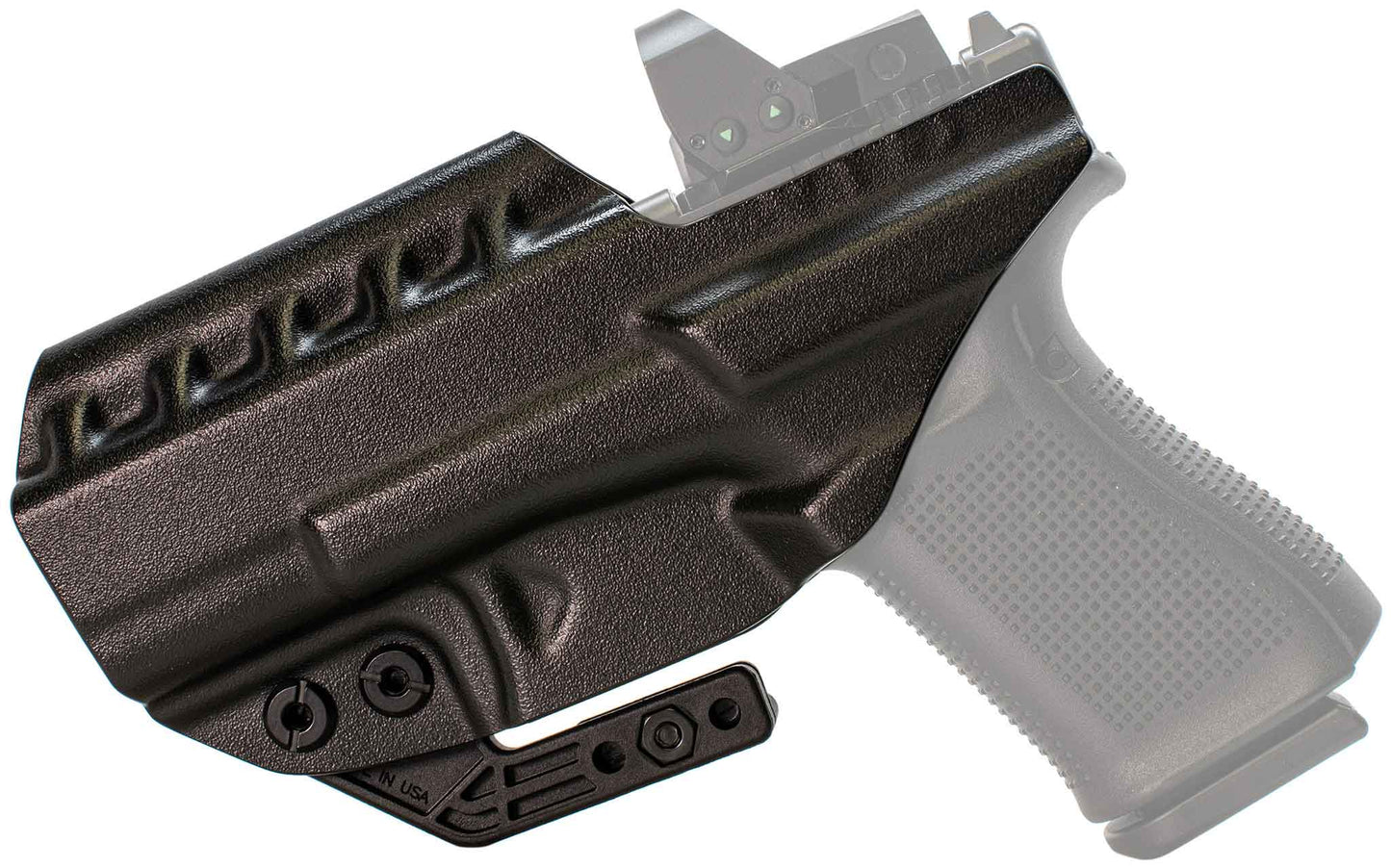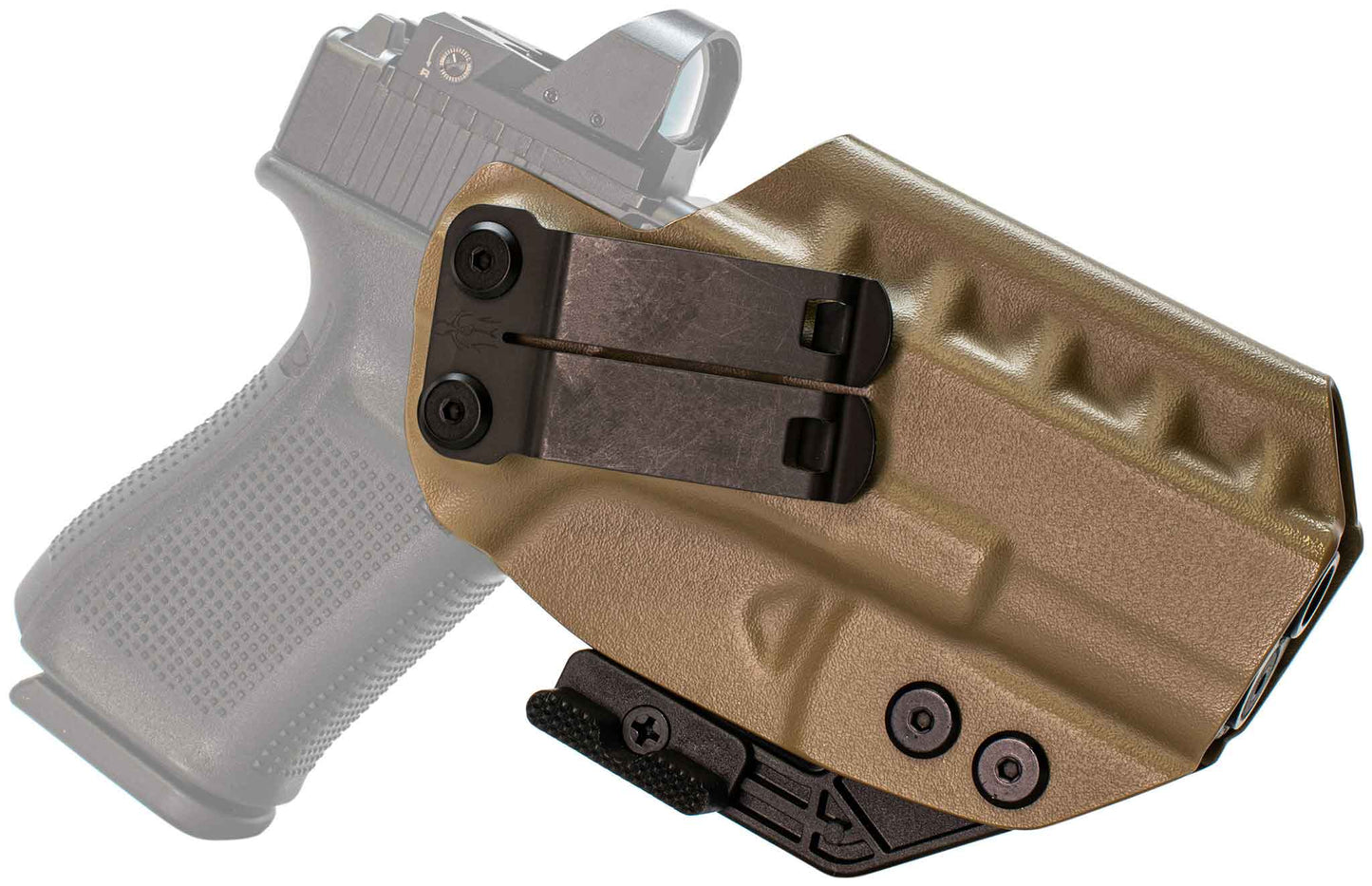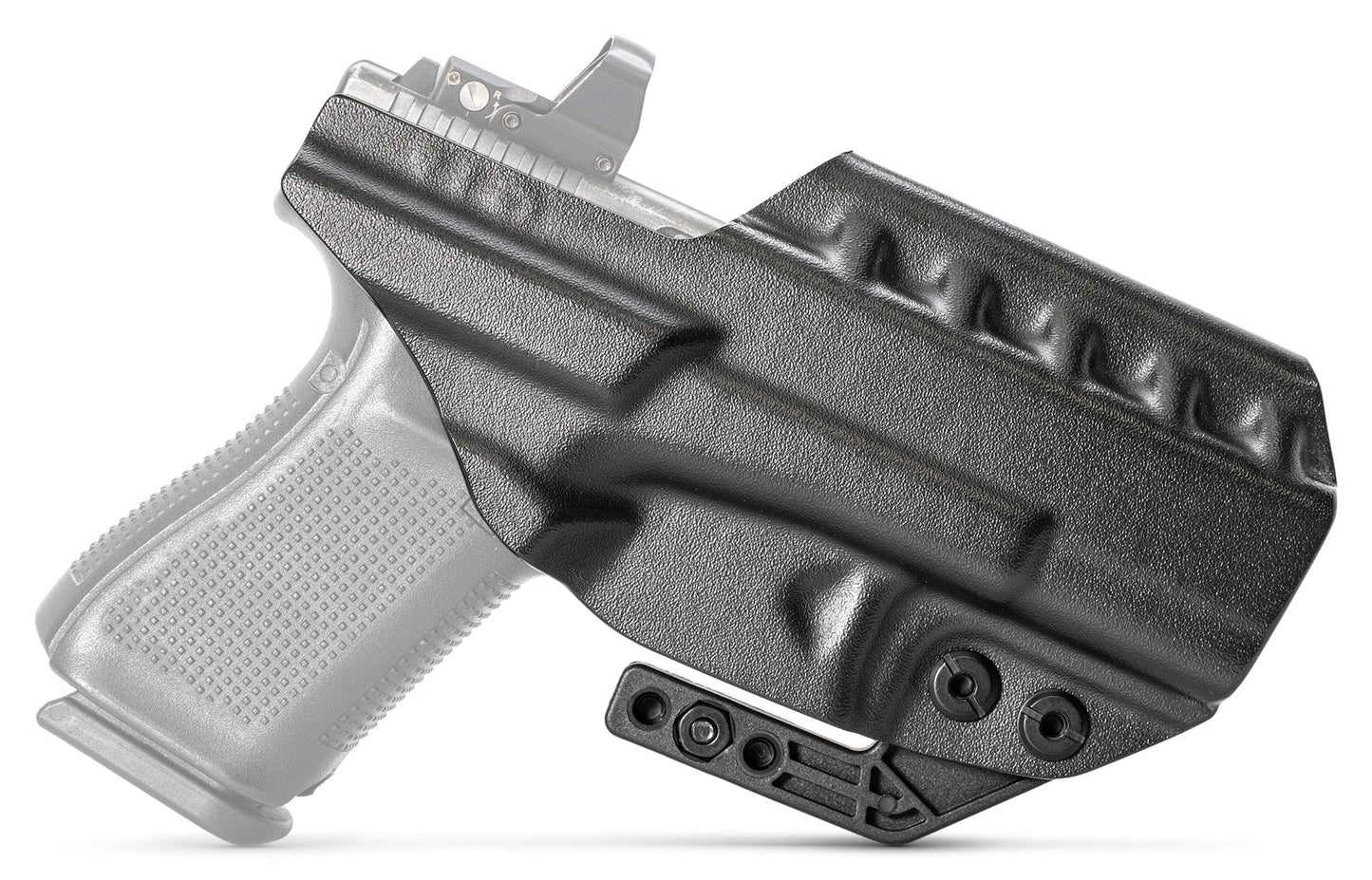Glock 19 Compensator: Enhancing Recoil Control and Accuracy
Glock 19 owners often seek to enhance their shooting experience by reducing muzzle flip and felt recoil. The use of a compensator is a popular modification that fulfills this need. Compensators attach to the firearm's barrel and utilize gases expelled during firing to counteract muzzle rise and stabilize the pistol. This improves control, which can be particularly beneficial in high-stress situations like competition shooting or self-defense.
The advantages of installing a compensator on a Glock 19 can be substantial. Utilizing exhaust ports, compensators redirect propellant gases to manage the firearm's movement upon discharge. Designs may vary, from models featuring a single exhaust port to multiple ports arranged vertically and horizontally for optimized performance. Materials such as CNC-machined aluminum are commonly used for these components, contributing to their durability. Still, they can also provide a seamless visual integration with the profile of the Glock slide.
Key Takeaways
- Compensators enhance shooting by reducing muzzle flips and felt recoil.
- Various designs and materials cater to personal preferences and specific shooting requirements.
- Choosing the right compensator involves considerations of compatibility, performance, and design. Check out the best Glock 19 Holster for concealed carry.
Design and Features
Glock 19 compensators are engineered to enhance the shooting experience by improving recoil management and offering customization options. Featuring robust materials and a variety of finishes, these components are designed for compatibility with Glock pistols and are typically easy to install.
Materials and Durability
Most Glock 19 compensators are constructed from 6061 aluminum, known for its strength-to-weight ratio and resistance to corrosion. This material undergoes a process known as black anodizing, which enhances the metal's surface strength, prolonging the compensator's lifespan. Some models also have a Flat Dark Earth (FDE) Cerakote finish, providing additional durability and corrosion resistance. Manufacturers often conduct extensive durability tests to ensure long-term reliability.
Recoil Management
Compensators are explicitly designed to reduce recoil reduction and manage both vertical and horizontal recoil. By redirecting the gases that exit the muzzle when the pistol is fired, compensators help decrease muzzle rise and felt recoil. This allows for quicker follow-up shots. Precision-engineered exhaust ports in the compensator are critical for controlling the muzzle flip and recoil.
Compatibility and Installation
Compatible primarily with Glock 19 pistols, compensators may require a threaded barrel to attach to the firearm. Installation generally involves aligning the compensator with the muzzle's thread, securing it with set screws, and often applying a thread locker like Loctite to ensure a tight fit. Some designs are made to work with specific aftermarket barrels, such as KKM or Barsto barrels. Installation typically does not require permanent modifications to the firearm and can be done with minimum tools.
Aesthetics and Customization
The design of Glock 19 compensators often seamlessly integrates with the pistol's existing lines, enhancing function and form. Compensators come in various finishes and colors, allowing personalizing the firearm. Besides the standard black, an FDE Cerakote finish offers a custom look while retaining the component's durability. Manufacturers often focus on the compensator's aesthetics to ensure it adds a customized and enhanced appearance to the Glock 19.
Selecting Your Compensator
When choosing a compensator for a Glock 19, one should assess the impact on concealed carry ability, performance improvements in recoil management, and the reputation and specifics of different brands and models.
Considerations for Carry
For those who use their Glock 19 for concealed carry, the size and weight of the compensator are crucial factors. Opting for a snag-free blended design ensures the compensator does not interfere with quick holster draws. Compatibility with existing holsters and the potential need for adjustments should also be considered. For steady carry, compensators that do not require alterations to the guide rod or spring allow a more straightforward setup process. Check out the best Glock 19 Holster for concealed carry.
Performance Enhancements
Enhanced accuracy and reduced recoil directly affect follow-up shot speeds, making the recoil system an essential consideration. Products like the Agency Arms 417 Compensator are designed to diminish muzzle rise with dual chamber systems, which can lead to notable improvements in shot-to-shot consistency. Others, such as the Strike Industries Mass Driver, focus on utilizing the gun's movement to offset recoil.
Brand and Product Evaluations
Deliberate over products from established brands known for reliability. The Tyrant Designs T-Comp Compensator stands out for its ease of installation and compatibility with 9mm Glock models. Consumers must review each product, considering construction, material—typically ranging from steel to lightweight aluminum—and how the compensator is secured to the Glock 19, be it with set screws or a thread-on design. Evaluating these factors will ensure the purchase enhances the Glock's functionality without undermining its design integrity.
Frequently Asked Questions
When considering the customization of a Glock 19 with a compensator, enthusiasts often have several queries regarding installation, performance impact, benefits, drawbacks, and the overall effect on recoil and handling. These FAQs aim to address those common concerns with straightforward and accurate information.
How do you attach a compensator to a Glock 19?
A compensator is typically attached to a Glock 19 by threading it onto the barrel's end, provided the barrel is designed with external threads to accommodate the compensator. Some models require additional tools or gunsmithing for a secure fit.
What impact does a compensator have on the performance of a Glock?
Compensators can significantly reduce muzzle flip and recoil, improving performance in rapid-fire scenarios by helping to stabilize the pistol between shots.
What are the benefits of installing a compensator on a pistol?
Installing a compensator on a pistol primarily reduces muzzle rise and felt recoil. This can allow for faster follow-up shots and potentially better control and handling of the firearm during shooting.
Are there any drawbacks to using a compensator on a Glock 19?
Potential drawbacks of using a compensator include increased noise and blast, additional cleaning requirements, and possible changes in the pistol's balance and weight distribution.
How does a compensator affect the recoil and handling of a Glock 19?
A compensator reduces the vertical and horizontal movement of a Glock 19's muzzle, diminishing the felt recoil and improving the shooter's ability to maintain a steady aim during rapid-fire sequences.
Can the use of a compensator on a pistol improve accuracy for shooters?
By limiting muzzle rise and allowing for faster sight reacquisition, a compensator can improve accuracy, especially for shooters engaging in rapid-fire or competitive shooting disciplines.

Justin Hunold
Wilderness/Outdoors Expert
Justin Hunold is a seasoned outdoor writer and content specialist with CYA Supply. Justin's expertise lies in crafting engaging and informative content that resonates with many audiences, and provides a wealth of knowledge and advice to assist readers of all skill levels.












